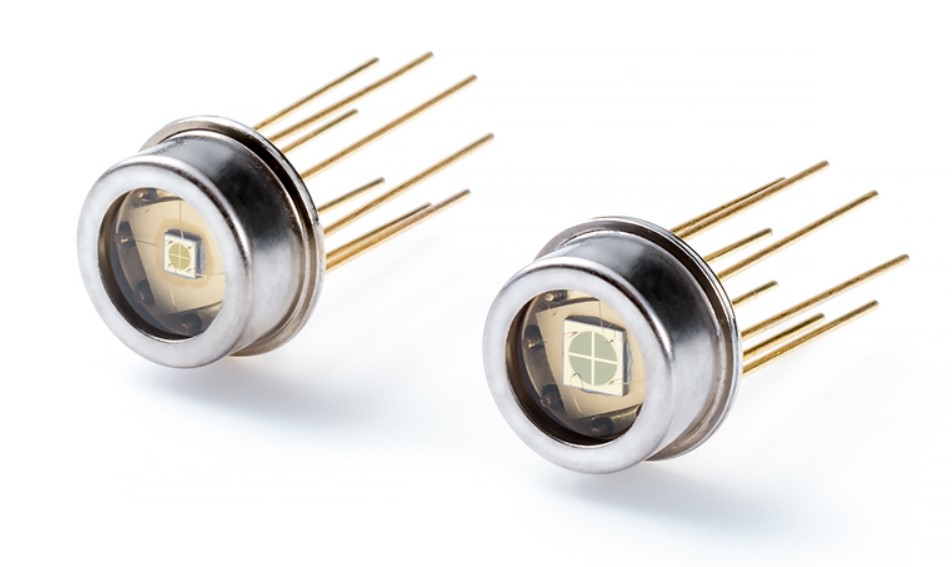
Photodiode sensors are a type of optical sensor that gets used to detect light and are a type of semiconductor device. They are made up of a light-sensitive diode, which is exposed to specific wavelengths of light and can be used to detect light within a particular range of wavelengths. Photodiodes can be used to measure light intensity, detect changes in light levels, and measure the position of an object relative to a light source.
Fundamentals of Photodiodes
Photodiodes are based on the photovoltaic effect principle, which converts light energy into electrical energy. The effect occurs when a photon of light strikes the photodiode, and the absorbed power gets converted into electrical energy. When light strikes the diode, it causes a reaction that creates electrons and holes, which are then attracted to the n-type and p-type materials, respectively. It causes a current to flow through the diode, which is then measured to determine the amount of light present.
Types of Photodiodes
The selection of the best photodiode sensors begins with understanding the different types of photodiodes available. Photodiodes get classified as either PIN photodiodes, avalanche photodiodes, or phototransistors. PIN photodiodes are the most widely used type of photodiode. They are typically made from semiconductors, such as silicon or germanium, and have p-type and n-type layers. The p-type layer gets positively charged, and the n-type layer gets negatively charged. When light is incident on the PIN photodiode, it creates a current that gets measured. PIN photodiodes are known for their high sensitivity and fast response time.
Avalanche photodiodes are used in applications that require extremely high sensitivity. These photodiodes are typically made of a semiconductor material such as gallium arsenide or indium gallium arsenide. When light is incident on the avalanche photodiode, it creates an avalanche effect, which amplifies the current produced. Avalanche photodiodes are used in medical imaging and scientific research.
Sensitivity
The sensitivity of a photodiode is one of the most important factors to consider when selecting the best photodiode sensors. The sensitivity of a photodiode is determined by its responsivity, which is the ratio of the output current to the input light intensity. The higher the responsivity, the more sensitive the photodiode will be. Selecting a photodiode with the appropriate response for the application is essential. If the photodiode is too sensitive, it may produce too much current, resulting in a signal that is too noisy. If the photodiode is not sensitive enough, it may not produce enough current to be detected. Responsivity is often specified in terms of the wavelength of light. For example, a photodiode may have a responsivity of 0.5 A/W at a wavelength of 600 nm. It means that when the light at a wavelength of 600 nm strikes the photodiode, it will produce 0.5 A of current per watt of light intensity.
Noise
The noise of a photodiode is another essential factor to consider when selecting the best photodiode sensors. The noise is caused by the random fluctuations of the current produced by the photodiode. The lower the noise, the more accurate the signal produced by the photodiode will be. The noise gets specified in the signal-to-noise ratio (SNR). A higher SNR indicates a lower noise level and a more accurate signal.
Temperature Range
The operating temperature range of a photodiode is another essential factor to consider when selecting the best photodiode sensors. Photodiodes typically have a limited temperature range in which they can operate. If the photodiode gets conducted outside its specified temperature range, its performance degrades. It is essential to select a photodiode suitable for the operating environment.
Package
The package of a photodiode is also an essential factor to consider when selecting the best photodiode sensors. Photodiodes are available in various packets, including surface mount, through-hole, and chip-on-board packages. Surface mount packages are the most common and suitable for limited-space applications. Through-hole packages are larger and more robust, making them ideal for harsh environments. Chip-on-board containers are used for high-speed applications.
Conclusion
Selecting the best photodiode sensors requires careful consideration of the application, the environment, and the desired performance. Photodiodes are available in various types, sensitivities, noise levels, temperature ranges, and packages. Selecting a photodiode that is suitable for the application and environment is essential. Considering these factors makes it possible to choose the best photodiode sensors for a given application.

